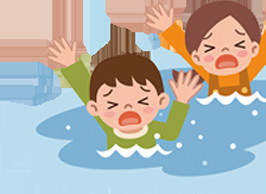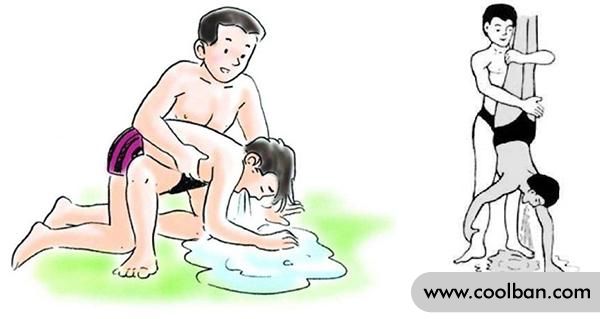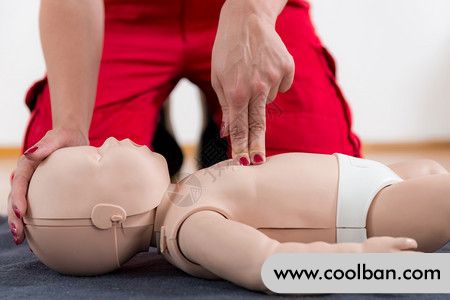How to first aid a child drowning?
2022-08-09
In my country, drowning is the top two causes of death among children. The length of drowning time and the length of time from rescue to success determine the prognosis of children.
Once a child is found to be drowning, in addition to calling for help in time and dialing the "120" emergency number, the drowning child should be removed from the water body as soon as possible. If it is open water such as lakes, rivers, etc., you should find rescue personnel as soon as possible. A rope, branch, swimming ring or other floating object should be extended to a drowning child in a safe location to help the child float or pull out of the water. In particular, children should be reminded that when they discover that someone is drowning, they must not go into the water without authorization, and should call for help in time.
After the drowning child leaves the water body, do not carry out any form of water control, so as not to delay the rescue and lead to a poor prognosis. First, the drowning child's consciousness, spontaneous breathing, and pulse should be determined.

Why is it necessary to "hang upside down to control water"?
When children are submerged in water, they will first instinctively hold their breath. However, due to lack of oxygen, they are forced to take deep breaths. Water generally enters two places, one is through the mouth, nose and respiratory tract to the alveoli, and the other is accidentally swallowed into the gastrointestinal tract.
When a large amount of water enters the alveoli, it blocks gas exchange, leading to a series of problems such as hypoxia, causing electrolyte imbalance and insufficient organ perfusion, and eventually causing respiratory and cardiac arrest. Generally speaking, the water entering the gastrointestinal tract will not cause too much damage. Children who have been drowning for a short time and rescued in time can even spit it out on their own. Water control is completely unnecessary.
The widely popular method of turning children upside down to control water has no effect on the water in the lungs, only the water in the stomach. So there is no point in hanging water control upside down.
On the other hand, for the arrest of breathing and heartbeat caused by drowning in children, the most important thing is immediate cardiopulmonary resuscitation, and unnecessary water control delays time.

Correct child drowning first aid
If the drowning child is conscious, has a pulse and is breathing on his own, he can dry his body, keep warm, and wait for rescue.
If the drowning child has lost consciousness, but has a pulse and spontaneous breathing, the airway should be opened, the debris, sediment and other foreign objects in the mouth and nose should be cleaned, and the drowning child should be placed on the side to prevent suffocation after vomiting; Keep the body of a drowning child warm, closely monitor breathing and pulse, and initiate CPR at any time.
If the drowning child is unconscious, effective spontaneous breathing and pulse disappear, the rescuer should immediately open the airway, clear the foreign body in the mouth and nose, and start CPR.
Child drowning cardiopulmonary resuscitation
Step 1: If a child is found to be drowning, they should immediately get out of the water source, and judge whether they are conscious and breathing - slap or call the child's name, and check breathing within 5-10 seconds at the same time. If there is a reaction and breathing, then Vital signs are believed to be present.
If breathing stops, cardiopulmonary resuscitation (CPR) should be used immediately.
Step 2: Use your little finger to remove the water plants and sand that block the airway of the child.

Step 3: Perform cardiopulmonary resuscitation (CPR) following the sequence of the ABC three-step method.
ABC method refers to: open airway (airway), artificial respiration (breathing), chest compression (compression).
A: Open the airway
After removing the foreign body in the mouth, hold the forehead of the drowning child with one hand, put the index finger of the other hand on the child's chin, gently tilt the head back, and open the uvula caused by the falling of the uvula due to gravity. Airway obstruction.

B: Artificial respiration
Mouth-to-mouth, or mouth-to-mouth blowing, depending on the size of the child's mouth and nose. The blow time is 1 second, the interval time is 1 second, and the two ventilations are completed in about 4 seconds. A significant rise and fall in the chest or abdomen indicates a successful blow.
The ratio of chest compressions and rescue breaths is 30:2, that is, 2 rescue breaths are performed after every 30 compressions.
C: chest compression
For smaller children, one-handed compressions can be performed with the base of the palm on the lower half of the sternum in the center of the chest, and the depth of the compression is about 5 cm, or about one-third of the thickness of the entire chest wall. As shown below:

For infants less than 1 year old, use 2 fingers to press, the position is the middle of the chest, the midpoint of the line connecting the two nipples and the junction of the sternum, and the pressure is about one-third of the thickness of the entire chest wall. As shown below:

The frequency should be at least 100 times per minute, and the next compression should be performed after the chest has fully recoiled each time.
Note:
1. If multiple people are present, dial 120 at the same time. If there is only one rescuer, perform 5 cycles of CPR (cardiopulmonary resuscitation) before dialing 120.
2. If there are multiple rescuers, it is recommended to rotate rescuers after 5 cycles of CPR to ensure the quality.
Once a child is found to be drowning, in addition to calling for help in time and dialing the "120" emergency number, the drowning child should be removed from the water body as soon as possible. If it is open water such as lakes, rivers, etc., you should find rescue personnel as soon as possible. A rope, branch, swimming ring or other floating object should be extended to a drowning child in a safe location to help the child float or pull out of the water. In particular, children should be reminded that when they discover that someone is drowning, they must not go into the water without authorization, and should call for help in time.
After the drowning child leaves the water body, do not carry out any form of water control, so as not to delay the rescue and lead to a poor prognosis. First, the drowning child's consciousness, spontaneous breathing, and pulse should be determined.

Why is it necessary to "hang upside down to control water"?
When children are submerged in water, they will first instinctively hold their breath. However, due to lack of oxygen, they are forced to take deep breaths. Water generally enters two places, one is through the mouth, nose and respiratory tract to the alveoli, and the other is accidentally swallowed into the gastrointestinal tract.
When a large amount of water enters the alveoli, it blocks gas exchange, leading to a series of problems such as hypoxia, causing electrolyte imbalance and insufficient organ perfusion, and eventually causing respiratory and cardiac arrest. Generally speaking, the water entering the gastrointestinal tract will not cause too much damage. Children who have been drowning for a short time and rescued in time can even spit it out on their own. Water control is completely unnecessary.
The widely popular method of turning children upside down to control water has no effect on the water in the lungs, only the water in the stomach. So there is no point in hanging water control upside down.
On the other hand, for the arrest of breathing and heartbeat caused by drowning in children, the most important thing is immediate cardiopulmonary resuscitation, and unnecessary water control delays time.

Correct child drowning first aid
If the drowning child is conscious, has a pulse and is breathing on his own, he can dry his body, keep warm, and wait for rescue.
If the drowning child has lost consciousness, but has a pulse and spontaneous breathing, the airway should be opened, the debris, sediment and other foreign objects in the mouth and nose should be cleaned, and the drowning child should be placed on the side to prevent suffocation after vomiting; Keep the body of a drowning child warm, closely monitor breathing and pulse, and initiate CPR at any time.
If the drowning child is unconscious, effective spontaneous breathing and pulse disappear, the rescuer should immediately open the airway, clear the foreign body in the mouth and nose, and start CPR.
Child drowning cardiopulmonary resuscitation
Step 1: If a child is found to be drowning, they should immediately get out of the water source, and judge whether they are conscious and breathing - slap or call the child's name, and check breathing within 5-10 seconds at the same time. If there is a reaction and breathing, then Vital signs are believed to be present.
If breathing stops, cardiopulmonary resuscitation (CPR) should be used immediately.
Step 2: Use your little finger to remove the water plants and sand that block the airway of the child.

Step 3: Perform cardiopulmonary resuscitation (CPR) following the sequence of the ABC three-step method.
ABC method refers to: open airway (airway), artificial respiration (breathing), chest compression (compression).
A: Open the airway
After removing the foreign body in the mouth, hold the forehead of the drowning child with one hand, put the index finger of the other hand on the child's chin, gently tilt the head back, and open the uvula caused by the falling of the uvula due to gravity. Airway obstruction.

B: Artificial respiration
Mouth-to-mouth, or mouth-to-mouth blowing, depending on the size of the child's mouth and nose. The blow time is 1 second, the interval time is 1 second, and the two ventilations are completed in about 4 seconds. A significant rise and fall in the chest or abdomen indicates a successful blow.
The ratio of chest compressions and rescue breaths is 30:2, that is, 2 rescue breaths are performed after every 30 compressions.
C: chest compression
For smaller children, one-handed compressions can be performed with the base of the palm on the lower half of the sternum in the center of the chest, and the depth of the compression is about 5 cm, or about one-third of the thickness of the entire chest wall. As shown below:

For infants less than 1 year old, use 2 fingers to press, the position is the middle of the chest, the midpoint of the line connecting the two nipples and the junction of the sternum, and the pressure is about one-third of the thickness of the entire chest wall. As shown below:

The frequency should be at least 100 times per minute, and the next compression should be performed after the chest has fully recoiled each time.
Note:
1. If multiple people are present, dial 120 at the same time. If there is only one rescuer, perform 5 cycles of CPR (cardiopulmonary resuscitation) before dialing 120.
2. If there are multiple rescuers, it is recommended to rotate rescuers after 5 cycles of CPR to ensure the quality.
